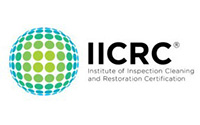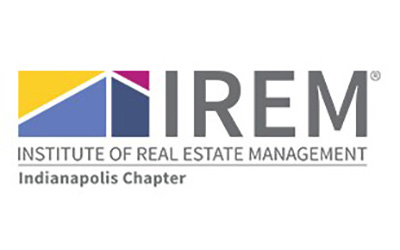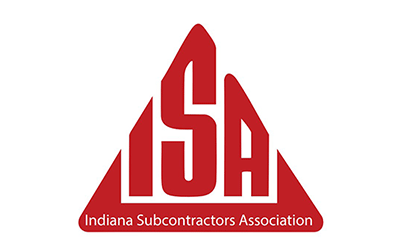What to do when you experience Flooding in Indianapolis? Essential Steps to Take Immediately
Flooding, a common natural disaster in many parts of the world, can cause significant damage to homes and communities. Indianapolis, a city familiar with the challenges of flooding, requires residents to be well-prepared and knowledgeable about what to do when faced with such situations. This article helps you understand the risks and necessary steps to take when flooding occurs in Indianapolis, ensuring your safety as well as that of your property.
Understanding the risks that floods present enables us to prepare and plan accordingly, ultimately protecting our homes and possessions. By considering the various aspects of flood safety – from knowing the proper evacuation routes to dealing with property and vehicle flood damage – we can minimize the impact of these disastrous events. Additionally, staying informed and connected with local news and emergency response agencies is crucial to our well-being during a flood. As water damage restoration experts in Indianapolis Elite Remediation & Services has a team of skilled water damage and flood damage experts that can help you.
Key Takeaways
- Prepare and plan for flooding by understanding the risks in Indianapolis
- Protect your property and ensure safety by following proper evacuation routes and guidelines
- Stay informed and connected for real-time updates during a flood
Understanding Flood Risks in Indianapolis
In Indianapolis, floods can occur due to excessive rainfall, snowmelt, and storms. Being situated in central Indiana, we experience a combination of weather events that can contribute to flooding potential. As part of a safer community, it is essential for us to be aware of flood risks and preparedness measures in our city.
Floods can happen at any time in Indianapolis, but the National Weather Service states that the risk is typically higher in the spring and summer months. This is primarily due to increased precipitation and snowmelt, which cause rivers and streams to overflow their banks. Low-lying areas can be especially vulnerable to riverine flooding.
We should also be aware of the impact of urbanization on flooding. As the city of Indianapolis continues to grow and develop, more impervious surfaces, such as buildings and roads, can lead to increased runoff and flash flooding during heavy rain events. This type of flooding is common in densely populated areas and can occur with little or no warning.
Understanding the flood risk in our area is crucial for homeowners and renters alike. Knowing our property’s flood risk can help us make informed decisions about flood insurance and emergency preparedness. FEMA’s Flood Maps can be a valuable resource in determining our property’s risk level.
In addition to regular maintenance, we can take proactive steps to protect our properties and reduce the impact of flooding. These measures might include the installation of sump pumps, backflow preventers, and proper drainage systems. Educating ourselves on flood safety and having a plan in place can help minimize the damage caused by floods and protect our loved ones.
As residents of Indianapolis, we must remain vigilant and invest time in understanding flood risks and preparing for potential events. By staying informed and proactive, we are contributing to a safer and more resilient community.
Preparation and Planning
When dealing with potential flooding in Indianapolis, it’s essential to have a solid plan in place to ensure our safety and minimize potential damages. One of the first steps in preparedness is to contact insurance providers to purchase flood insurance since new policies take 30 days to become effective. It’s crucial to be aware of flood plains in our area and create a map of multiple possible evacuation routes in case of flooding.
It’s also advisable to stay informed about flood risks in our community and know the types of flooding we might encounter, such as flash floods, river floods, or storm surges. We can reach out to our local office of emergency management for further advice and details on our home and community’s flood risk.
In order to protect our property, we should take steps such as elevating and anchoring utilities, waterproofing our basement, clearing debris from gutters, and elevating or moving our furniture to minimize losses from flooding. Furthermore, it’s essential to have a communication plan with our family members and neighbors to ensure we are all aware of the situation and can help each other if needed.
In the event of a flood, we must prioritize our physical safety. If authorities advise us to evacuate, we should do so immediately. It’s essential to avoid driving through floodwaters, as just 2 feet of water can cause most cars to float. Additionally, staying off bridges over fast-moving water is critical for safety during a flood.
By taking these precautions and planning ahead, we can be better prepared to protect ourselves, our families, and our property in the event of a flood in Indianapolis.
Protecting Your Property
Experiencing flooding in Indianapolis can be a daunting situation, but taking the right precautions can help minimize property damage. We should start by understanding our property’s location in relation to the floodplain. This will inform our decisions on construction and necessary measures to protect our homes and belongings when water levels rise.
When building or renovating a property, we should adhere to the local zoning requirements which regulate construction in flood-prone areas. Elevating the building or using waterproof materials on the lower level can reduce the impact of floodwaters. For example, using masonry, concrete, or pressure-treated lumber at least 12 inches above the Base Flood Elevation (BFE) can help protect mechanical units, furnaces, and electrical systems from water damage. Additionally, consider using flood-resistant materials like tiles instead of carpet, which tend to retain water and promote mold growth, as suggested by FEMA.
Our roof is another critical aspect of property protection. Ensure that it is well-maintained and able to withstand heavy rain and winds. Investing in a robust gutter system and keeping it free from debris can prevent water from accumulating near our home’s foundation. Utilizing the natural green space around our property can also help reduce stormwater runoff, which FEMA says can lead to overflows in nearby storm sewers.
One of the most critical aspects of protection is having adequate flood insurance coverage. Many homeowner’s insurance policies do not cover flooding, so it’s essential to enroll in the National Flood Insurance Program (NFIP). The NFIP offers affordable insurance options for homeowners residing in floodplains and can help alleviate the financial burden of repairing flood damages, providing peace of mind during trying times.
In summary, understanding our property’s floodplain location, making smart construction choices, maintaining our roof, and obtaining appropriate flood insurance coverage are essential steps we can take to protect our homes and belongings when faced with flooding in Indianapolis.
Safety During a Flood
When experiencing a flood in Indianapolis, it’s crucial for all of us to prioritize our safety and follow specific guidelines. To begin with, never attempt to drive through floodwater. As little as 2 feet of water can cause most cars to float, putting you at significant risk. Instead, find an alternate route or wait for the floodwater to recede.
It is essential to stay informed by tuning into local news and weather updates. Pay close attention to evacuation orders, and make sure you’re aware of your surroundings. Familiarize yourself with your community’s flood plains and design a map of multiple possible evacuation routes in case of flooding.
During a flood, avoid walking or swimming through floodwaters. As stated on Ready.gov, just six inches of moving water can knock you down, while one foot can sweep your vehicle away. Additionally, avoid bridges over fast-moving water as they can be unstable and dangerous.
Electricity and water are a dangerous combination, making it critical to exercise caution in our homes during a flood. If you anticipate your home being affected, act preemptively by turning off electricity at the main breaker or fuse box, even if it’s already flooded. If you’re unsure whether it’s safe to do so, contact a professional electrician.
Finally, prioritize your health by only consuming clean and safe water. In the aftermath of a flood, local authorities may announce boil water advisories. Heed these warnings and use only bottled, boiled, or treated water for drinking and cooking to protect yourself from potential contaminants. Follow the flood safety tips shared by the Centers for Disease Control and Prevention to ensure your well-being.
By following these safety measures and staying informed, we can all navigate through flooding situations and safeguard ourselves and our communities.
Dealing with Vehicle Flood Damage
Experiencing a flood in Indianapolis can be devastating, and dealing with vehicle flood damage is a crucial part of the recovery process. As soon as it’s safe to go outside, we recommend taking immediate action to minimize any further damage to our cars.
First, let’s survey the damage and note the depth of the floodwaters in relation to the vehicle. If our car has been partially or fully submerged in water, it can result in extensive damage and costly repairs. It is essential to act quickly as the longer our car stays submerged, especially if it’s saltwater, the higher the chances of corrosion.
Next, we should disconnect our car’s battery and remove any valuable items from inside the car. Since the interior could be wet or soaked, allowing the vehicle to dry out for a few days is essential. It’s also a good idea to remove the spark plugs and crank the engine to get any remaining water out of the cylinders. Alternatively, consider having the car diagnosed by a professional to assess the damage properly and ensure all the necessary steps are taken to restore its condition.
Our car’s oil and oil filters should be changed multiple times during the recovery process. They should be replaced as soon as the engine is dry, then changed again after the car has been driven for around 500 to 1,000 miles. This will help to prevent further damage caused by old, contaminated oil.
Mold and mildew can develop in flood-damaged vehicles, so thoroughly cleaning and drying the interior is also essential. This may involve removing upholstery, cleaning surfaces with disinfectants, and using fans or dehumidifiers to dry the interior effectively. Keep in mind that even though we can clean our cars ourselves, consulting a professional cleaner is often the best approach to ensure thorough and lasting results.
Lastly, remember to document all the damage and repairs for insurance purposes. Additionally, if we’re considering purchasing a used vehicle with a history of flood damage, it’s crucial to consult the National Insurance Crime Bureau’s database to verify if the car was insured when it was damaged. This will help us make informed decisions and ensure that we’re not left with a vehicle that could potentially have hidden issues.
Flood Recovery and Cleanup
When experiencing flooding in Indianapolis, it is essential to act promptly to minimize damage and ensure a smooth recovery process. Here are some steps that we recommend taking during flood recovery and cleanup.
First, we advise contacting your insurance company as soon as possible. They will deploy a claims management team to assess the damage. Make sure to have your policy number and contact information for your insurance agent handy. A claims adjuster will visit your property to evaluate the extent of the damage and provide guidance on the next steps.
During cleanup, it is crucial to address moisture and mold issues. Begin by removing waterlogged items from the affected area and disposing of any damaged materials that cannot be salvaged. To prevent mold growth, use dehumidifiers and fans to circulate air and promote drying. You can also use a wet/dry vacuum to help remove excess water. Make sure to sanitize every surface that has come into contact with floodwater.
Document all the damages and maintain a list of all affected items. Take photographs or videos to capture the condition of your belongings and property. Remember to keep track of any receipts related to the cleanup process, such as labor costs, equipment rentals, and material expenses. This documentation can be crucial in supporting your insurance claim.
When it comes to repair work, always entrust a reputable contractor to ensure professional quality. Be cautious of scam artists or unlicensed individuals who may try taking advantage of the situation. Obtain multiple quotes, research their background, and ask for references. Make sure to have a written contract in place detailing the scope of work, costs, and timeframes before commencing repairs.
Throughout the recovery process, communication is key. Stay in regular contact with your insurance agent, adjuster, and construction team to ensure everyone is on the same page. This will help expedite the process and make sure your flood recovery and cleanup efforts are as efficient and effective as possible.
Local Flooding Incidents
We have experienced several flooding incidents in Indianapolis, which can cause disruptions in our daily lives and damage to property. One such incident took place on East 25th Street, where heavy rainfall led to flash floods, affecting nearby residents and businesses. Similarly, Wheeler Street witnessed a significant flooding event that caused road closures, power outages, and property damage.
Keystone Avenue, a busy thoroughfare in the city, has also faced its share of flooding issues. These can be particularly troublesome, as they disrupt traffic flow and often require temporary detours or lane closures.
Another common cause of flooding in Indianapolis is water main breaks. A notable example occurred when a Citizens Energy Group water main break led to the flooding of streets and nearby properties. Large-scale water main breaks can cause significant damage to the infrastructure in our city, which further complicates clean-up and recovery efforts.
As we continue to experience these types of flooding incidents, it’s essential to be aware of potential risks and take the necessary steps to protect ourselves and our properties. Some actions to keep in mind include:
- Contacting insurance providers to purchase flood insurance.
- Becoming aware of flood plains in our vicinity.
- Creating a map of multiple possible evacuation routes in case they flood.
- Avoiding driving through floodwaters, as just 2 feet of water can make most vehicles float.
By staying informed and prepared, we can better navigate and deal with the challenges posed by these local flooding incidents.

Staying Informed and Connected
As we experience flooding in Indianapolis, it’s crucial for us to stay informed and connected with reliable sources to ensure our safety and the safety of our community. One essential resource for accurate and up-to-date information is the National Weather Service, which provides detailed forecasts, warnings, and real-time data on flooding and other weather-related events.
To stay connected with local authorities and emergency responders, we can turn to IN.gov, the official website of the State of Indiana, which offers resources and information on flood preparedness and safety. We should also familiarize ourselves with the Emergency Alert System (EAS) and ensure that our devices are set up to receive these critical alerts.
Additionally, signing up for FEMA alerts can help us stay informed about potential flood risks and federal assistance during times of disaster. This service keeps us updated on crucial information and resources that can aid our community during and after flooding events.
Social media platforms, such as Twitter, can be a valuable tool for staying connected to real-time updates and emergency response information from local authorities, weather agencies, and news outlets. Following accounts like the National Weather Service, the Indiana Department of Homeland Security, and local news channels can quickly inform us of relevant developments throughout the flood.
In summary, by staying informed and connected through reliable sources like the National Weather Service, IN.gov, FEMA, and social media, we can better navigate flooding events in Indianapolis. This ensures our safety and the well-being of our community, helping us to respond effectively and promptly when faced with potential flood hazards.
Frequently Asked Questions
How can I prepare for flooding in Indianapolis?
To prepare for flooding in Indianapolis, it’s essential to stay informed about potential flood risks and warnings. By keeping an eye on local weather forecasts, you can stay up to date on possible flood events. It’s also crucial to have an emergency plan in place, which includes routes for evacuation and a list of essential items to pack. Performing regular maintenance on your home’s drainage systems can also help mitigate flooding risks.
What should I do during a flood in Indianapolis?
During a flood, prioritize your safety and that of others around you. If you receive a flood warning, follow evacuation instructions immediately. Avoid walking or driving through floodwaters, as it can be dangerous and lead to accidents. Stay updated on local weather conditions, and if you’re in a safe location, follow the advice of emergency personnel.
What steps should I take after a flood has occurred in Indianapolis?
After a flood, return to your home only when authorities declare it safe. Report any damages to your property and contact your insurance company. Take necessary precautions while cleaning and disinfecting your home to avoid injuries or illnesses. Ensure that your home is well-ventilated and dry before moving back in.
What resources are available for flood assistance in Indianapolis?
Several resources in Indianapolis can help during flooding events, such as the National Weather Service for real-time weather updates. For flood assistance and recovery, you can reach out to the American Red Cross or FEMA.
How do I find out if I need flood insurance in Indiana?
To determine if you need flood insurance in Indiana, consult with your local floodplain administrator or review the FEMA floodplain mapping. This information will help you understand whether your property is located in a high-risk flood zone, which can help you make an informed decision about purchasing flood insurance.
What measures can be taken to minimize flooding damage around my home?
To minimize flooding damage, maintain a proper drainage system around your home, and consider installing flood barriers or raising electrical equipment above the base flood elevation level. Implementing landscaping designs that channel water away from your property can also help reduce potential flooding damage. Furthermore, consider investing in a sump pump to remove excess water and help prevent water damage.



























